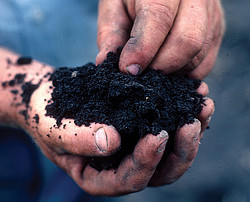
One handful of healthy soil contains more micro-organisms than there are people living on earth. The thin layer of topsoil, that we walk on and through which plants send their roots, is the result of enduring, age-old processes of decomposition, transformation and accretion through countless organisms. Most of these organisms are microscopic and at present we only know a fraction of them. Since the transition from hunter-gathering lifestyles to settled agricultural societies, human civilisations have time and again learnt from painful experience that healthy soils are more fragile than they might appear. The long-term fertility of a soil, its resilience and capacity to regenerate form the foundation of all forms of agriculture which is built on a very sensitive base.
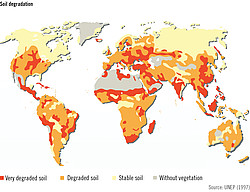
Errors in the management and care of soils often become visible when it is too late to avoid the consequences. Some proven methods are no longer adequate to meet the demand of a growing world population for fertile soil. These include slash and burn agriculture, which was traditionally used to convert forest areas into arable land for are restricted period of time, thereby adding nutrients to the soil, as well as the practice of leaving land fallow for several years to enable soils to regenerate.
Some of the world’s most vulnerable farmlands are tropical areas, where most of the organic matter is found on and above the surface, overlying a very thin topsoil layer, as well as the oldest soils in the world in the subtropical, dry plains of Africa. European soils, on the contrary, are deeper and richer in organic matter and for this reason more resilient.
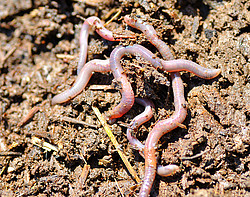
Building up, maintaining and conserving the fertility of different soil types around the world in the face of diverse climatic conditions is the biggest challenge to agriculture today. The key to soil fertility lies mostly in the humus content of soils. The wide variety of essential nutrients can only be available if soils contain a sufficient proportion of decomposed organic matter. And only then can these nutrients dissolve in the water and be absorbed by the plant. Generations of farmers and soil scientists from different cultural backgrounds have been researching and experimenting with tilth, the optimum soil condition for the cultivation of plants. Animal and human manure, nitrogen-fixing leguminous plants, mulching techniques, composting and adequate crop rotation can all play an important role. Equally important factors for soil fertility are the preparation and protection of the soil structure, root penetration, aeration, shadow and water absorption and storage, wind protection, run-off prevention, and terracing. To be truly healthy, soil also needs to be teeming with a wide variety of soil-dwelling organisms such as worms, spring tails, woodlice, as well as the right combination of soil microorganisms and fungi.
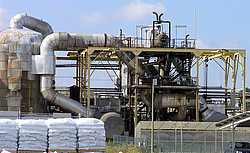
Over the past hundred years, the sophistication of localised adaptive soil conservation and land use has suffered, because these skills have increasingly been replaced by the generalised use of synthetic mineral fertilisers. These fertilisers are easily applied, are seemingly inexhaustible and have replaced the long-term conservation and building-up of soil fertility. Each year, more than a 100 million tonnes of synthetic nitrogen fertiliser are manufactured using the eponymous Haber-Bosch industrial process for making ammonia, developed by German chemists Fritz Haber and Carl Bosch. Since the process only works at high temperatures and pressure it requires large energy inputs, making agriculture in general and soil fertility in particular dependent on the oil price.
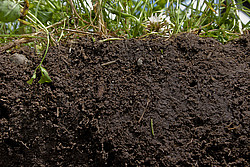
The boost in nutrients, provided by nitrogen fertilisers, made possible the steep increase in agricultural production over the past century and enabled the current overproduction. However, it has the same fatal effect on soils as a drug: the natural soil fertility and especially the humus formation are both affected. Soils are depleting and leaching faster; soil acidification is accelerating; or the soils need higher doses of mineral fertilisers. At the same time, mineral fertilisers tempt farmers to abandon the more time-consuming, knowledge-based and labour-intensive methods of conserving soil fertility. Or they are compelled to do so for economic reasons. Without the introduction of industrially produced mineral fertilisers, farmers would not have been able to specialise in just a few crops, have monocultures or give up animal husbandry.
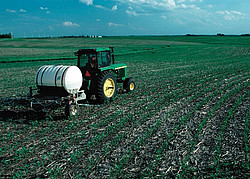
The IAASTD makes the case for an intensive relearning of this knowledge for both industrial and small-scale agriculture, as well as its re-application in agricultural research. The report calls for refraining from all forms of agriculture and soil management that disregard the fundamental value of fertile soils. This includes over-fertilisation, the overexploitation of sensitive soils, and exposure to water and wind erosion, which can be prevented for example with a stock of trees or hedges. Other harmful practices include the use of heavy machinery which can lead to soil compaction, as can deep or unnecessary tillage with a plough. But soils are also threatened by the sealing of fertile land close to cities in industrial regions.
Facts & Figures
Land degradation and desertification threaten fertile land and the benefits human society derives from it throughout the world. On a global scale, around 10 – 20% of drylands and 24% of the world’s productive lands are degraded.
The European Union is losing 970 million tonnes of soil per year due to water erosion, an amount equivalent to a one metre-depth loss of soil from an area the size of the city of Berlin or enough to cover an area twice the size of Belgium with one centimetre of soil.
Currently the cost of land degradation reaches about US$490 billion per year, much higher than the budget for action to prevent it. Roughly 40% of the world’s degraded land occurs in areas with the highest incidence of poverty. Land degradation directly impacts the health and livelihoods of an estimated 1.5 billion people.
Our most significant non-renewable geo-resource is productive land and fertile soil. Each year, an estimated 24 billion tonnes of fertile soil are lost due to erosion. That’s 3.4 tonnes lost every year for every person on the planet.
Soils store more than 4000 billion tonnes of carbon. By way of comparison, the forests store 360 billion tonnes of carbon as woody biomass, and the atmosphere more than 800 billion tonnes in the form of carbon dioxide.
Agroforestry of maize associated with fast growing and nitrogen-fixing shrubs (e.g. Calliandra and Tephrosia) has spread among tens of thousands of farmers in Cameroon, Malawi, Tanzania, Mozambique, Zambia and Niger. These soil-improving plants resulted in an improvement in total maize production, with yields of 8 tonnes per hectare compared with 5 tonnes over a five-year period.
The current high erosion rates throughout the world are of great concern because of the slow rate of topsoil renewal; it takes approximately 500 years for 2.5 cm layer of fertile topsoil to form under agricultural conditions.
With increasing population growth, the amount of arable land available for each person is continually dropping. Currently, each human being has only 2000m² at his or her disposal; in 1961, that figure was 4000m². The amount of arable land available per person will decrease to 1500m² by 2050.
Yield reduction in Africa due to past soil erosion may range from 2–40%, with a mean loss of 8.2% for the continent.
